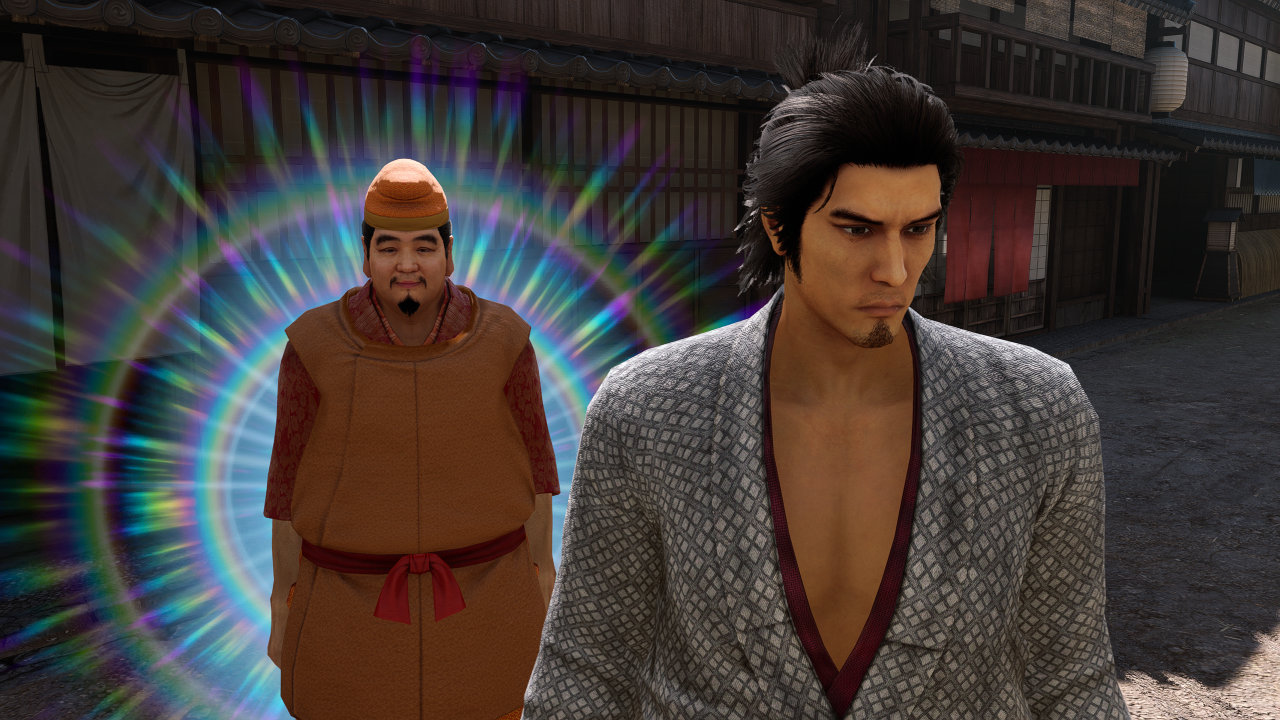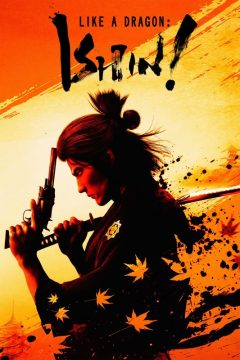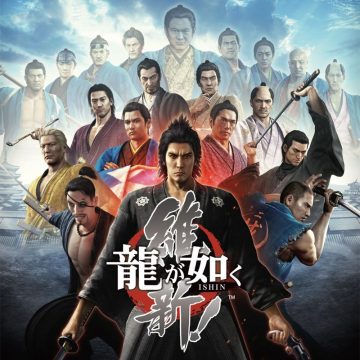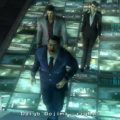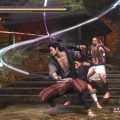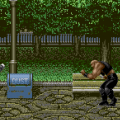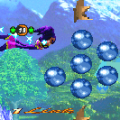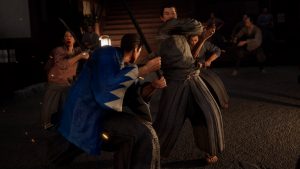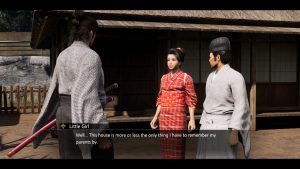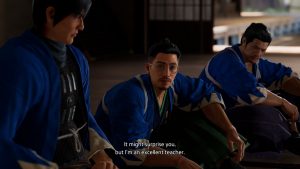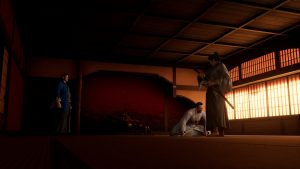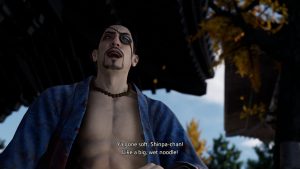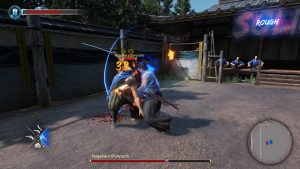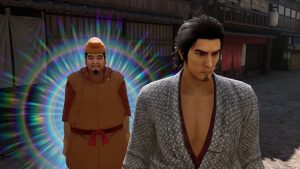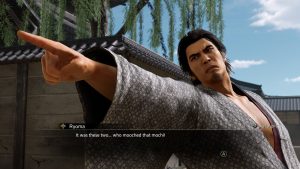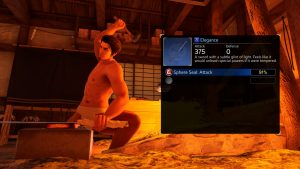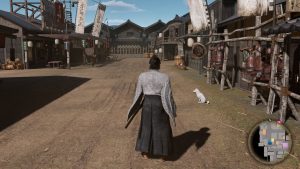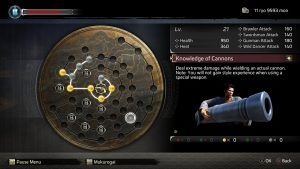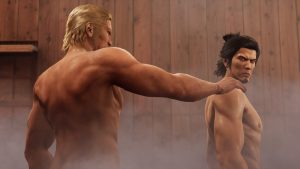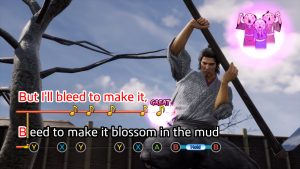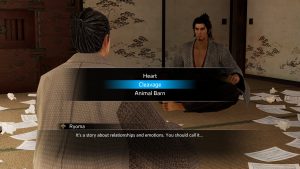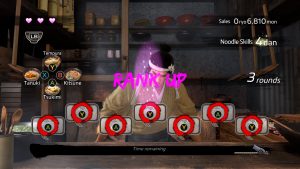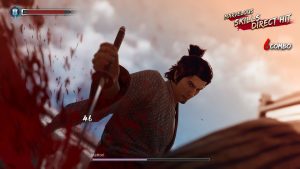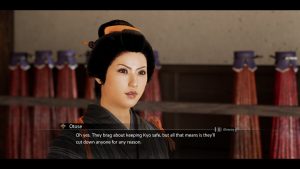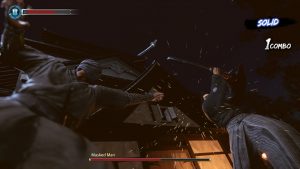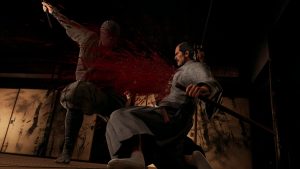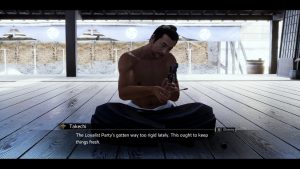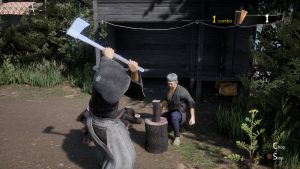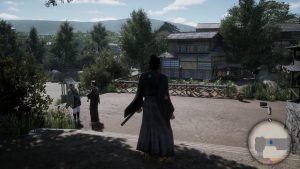As they did before with the start of the PS3 era, the Like A Dragon developers entered the PS4 era testing the new technology with a samurai focused game, though with a toned down version for the PS3. The formerly Japanese only Like A Dragon: Ishin! has thankfully been brought westward as of 2023, in the form of a “Kiwami” style remake, though nowhere at the scope of the PS2 game remakes. It’s an important entry to see the final steps that would lead to Yakuza 0, how it refined previous ideas into the addictive modern pacing and gameplay loop of recent entries, and how it would finally nail down the idea of style systems. It also has some political baggage, unfortunately, due in part to the time period it is exploring and failure to actually explore it.
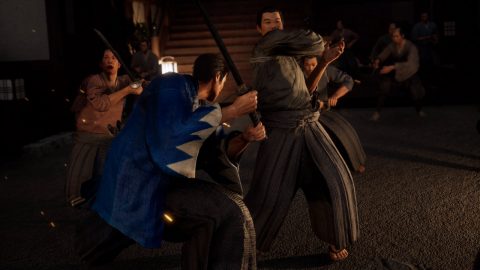
Ishin takes place during the late Edo period, around the 1860s. Japan is on the verge of a shift in government, the ruling shogunate being opposed by various factions, including those who wished to see the Emperor restored to power known as “loyalists,” to keep things simple. Western pressures don’t help, including the USA using gunboat diplomacy during the black ship incident, forcing the country to open up on threat of invasion, ending their long standing isolationist stance.
Our lead, given Kiryu’s face and actor, is Sakomoto Ryoma, a low ranking samurai called a goshi who went off to Edo to learn to use a sword. Upon returning home to Tosa, his adoptive father and governor Yoshida Toyo and adoptive brother Takechi Hanpeita recruit him into the Tosa Loyalist Party and their plan to overthrow the powers of the region and do away with the restrictive class system. Things go south when an assassin using a unique sword style kills Toyo and frames Ryoma, leading him to leave for the capital to find the truth. Under the name of Saito Hajime, his search leads him to joining the shogunate loyal secret police of the Shinshengumi, where that strange sword style the assassin used is also used by its founding members. As his search continues, his relationship with Hanpeita is strained, as it becomes clear they have very different ideas on how to get Japan to change for the better.
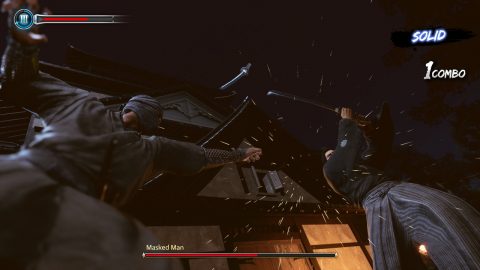
Anyone with a passing familiarity with this period of time probably did a double take while reading that synopsis. Ishin takes way more liberties than even Kenzan did, creating a full on historical fiction that deviates from the very start of the game. The entire premise is based on a rumor of Sakomoto Ryoma having secretly faked his death and joining the Shinshengumi, and takes wide reaching liberties from there. For example, Toyo being a secret wanter of social progression is completely made up so he can better fit the story role Kazama did in the main series, since they have the same face and actor. It also helps create a strong focus for the story, so those unfamiliar with the real history still have something to latch onto – though make no mistake, historical in-jokes and subversions are here aplenty, mixed in with the use of familiar Like A Dragon faces.
Since this entry was made deep into the series run, the developers had a ton more faces to work with for casting, while Kenzan was limited to a scant few characters from the PS2 games. As a result, there’s a mess of clever casting, like Nishiki not being Kiryu’s bond brother, but someone he barely knows who works for his actual bond brother in this entry. That irony is made all the richer in the Kiwami version, as various characters from the PS3 era or characters who were previously just “as him/herself” were swapped out for faces from modern games. It’s kind of wild to see Kiryu’s adoptive brother being played by the main antagonist of Yakuza 0, and feeling so alien from that role that it’s actually unnerving at points. While there’s some noticeable snubs, like Ichiban only getting to be a trooper card cameo (most likely because he and Nishiki share the same actor), it is nice to get surprises, the biggest being the old perv deadbeat Adachi from Yakuza: Like A Dragon leading the freaking Shinshengumi!
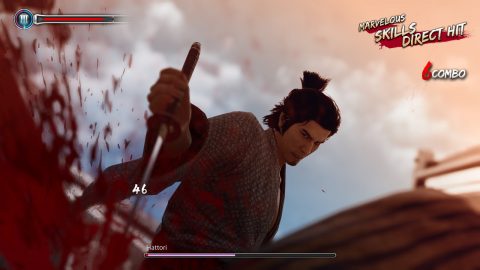
As for that story, it’s solid but nothing too special, mostly because there’s a weird disconnect in how it deals with the actual politics of a heavily political era and conflict. Longtime series writer Masayoshi Yokoyama handled this entry, and mostly leans into his usual toolbox of crime and drama tropes to make the story flow with the usual vibe of a core series game. What that leaves us with is off to the side mentions of what all is going on in the bigger picture, outside Ryoma getting to be against extremely obvious injustices like the class system, or expressing the importance of keeping up with western science and knowledge. And then you hit the end of the game and a pretty nasty can of worms gets opened.
Hearing Kazuma Kiryu say things like “Japan will rise up again and again,” “our future brethren,” “I’m sure [Japan] has a lot more blood to spill,” “we have to believe in this country,” is jarring, to say the least. In all fairness, the speech is partly about Japan needing to be a better place for its people, but the nationalist elements are definitely there (especially the focus on the land/country itself). They pop up from time to time in the main game itself, and in the side stuff, but this one speech at the very end raises more than a few eyebrows. That’s not to say this game is right wing propaganda, but rather a reflection of Ryu ga Gotaku‘s kind of confused politics and social stances.
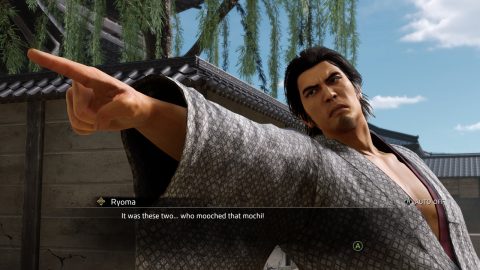
Like A Dragon, as a whole, tends to lean into empathy as a major tenant, and has been standing up for those at the edge of society for a long time. Even the PS2 games had clear sympathy for the homeless, and as things have gone on, there’s been clear siding with the plight of immigrants, sex workers, and exploring flawed institutions like the yakuza as serving a role of giving those with nowhere else to go somewhere where they can have a life of some sort. It’s a series about how even the lowest of the low deserve to be seen as people and respected for it, even the most seemingly despicable, and how we can build connections with each other despite these social divides. Sometimes this requires sense being punched in because manly cool stuff, but you get the picture.
However, it’s also been a product of Japan’s generally conservative modern culture, partly due to the long dominance of the Liberal Democratic Party, which is very conservative despite its name. The use of homophobic and transphobic humor stems from how the team of mostly older Japanese men have experienced such people through media. The restrictive and reductive roles female characters get in these games (especially in their Judgment series) is also a product of this. Ishin is suffering from that same common issue, where the uncritical pride in ones country ends up muddling the exploration of important topics that inherently jam of the works of such a viewpoint.
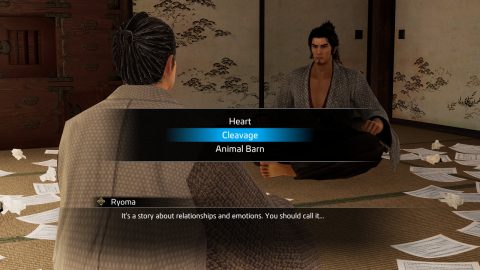
This isn’t that different from similar conservative leaning western works, mind you. The Call of Duty franchise is mostly a celebration of the American military, which if you have not read, has done some war crimes here and there. What all this does mean is that the series can trip over its own beliefs through what it has absorbed from the background radiation of societal norms, which has resulted in such bizarre incidences as a series both having an entry that’s extremely pro-immigrant (Yakuza: Like A Dragon) while still creating factions based on using their cultural identifiers as a symbol of otherness to be feared (especially if they’re Chinese). It’s worth being aware of this, especially in the case of this entry. If you want to give it a go, don’t be afraid to do some reading on the actual history, both as a means to better understand what the game isn’t really exploring, and to get more from the subversions on display in the roles of the historical cast. It will also help make better sense of the stances made and not made by the characters.
The long lasting effects of Ishin also cannot be underestimated. The defining loops of side activities in Yakuza 0 can all be found here, from a friendship system with various NPCs, to lots of fleshed out minigames and side activities with significant depth, not to mention the use of a circle shaped skill grid for each style. Ryoma can use an affectation of Kiryu’s normal brawling style, though with Tanimura’s parry to balance out options for dealing with weapon users. The base swordsman style has a good block the other styles lack, and bases itself around charge attacks (ala Saejima) and careful timing to open enemies up to devastating follow up moves. Gunman, of course, has you take out your gun and start blasting. Damage per shot is low, but you have a ridiculous range and can use limited special ammo for deadly heavy shots. Downside is that your evasive and defensive options are the lowest of the bunch. Wild dancer combines a sword and gun for a quick step heavy style with combos that flow in and out of hits easily, great for crowds, but comes with the drawback of no block.
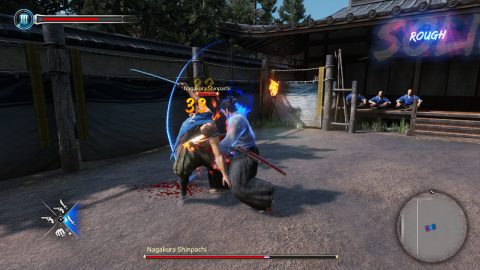
Each style is instantly fun to use and rewarding to master, including with unique skills for associated masters (one of them being Komaki, of course). You can also grow them out with a unique system where every style can be leveled up with use, alongside hard overall leveling. A proper level up gives a “training orb” that can be placed in any skill grid, but leveling a style with give an orb that can be placed only within that style’s grid. This gives plenty of reason to build them all out, and all of them have useful stuff not just for the style itself, but can grant overall benefits to Ryoma.
However, experience is gained mainly from combat. What doing substories and checking off the completion list gets you instead is virtue points, which can be traded at shrines. If you’re familiar with Yakuza 0‘s completion points system, this will sound very familiar. There’s a whole ton of bonuses to get here that are well worth the trouble, especially for minigames. The focus on weapons also means there’s a lot of incentive to actually engage with the crafting system here, especially to make weapons with unique properties. Ishin has a full on status effect system in place, something that wouldn’t get added to the RGG action formula until after Yakuza: Like A Dragon. It was an anomaly in this entry.
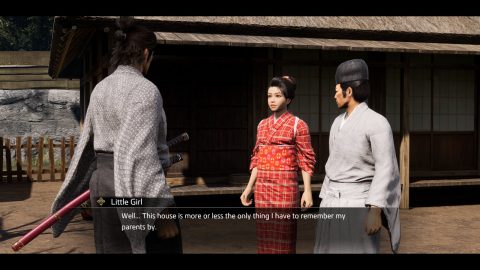
Another Life is a side story activity related to Haruka, who’s in debt in this continuity and needs Ryoma’s help to pay it off. This is done mainly in Harvest Moon style farming activities, filling out orders from farming and fishing and so forth. Third Division, on the other hand, is incredibly substantial, a series of dungeons and challenge battles where you have access to various Shinshengumi recruits Ryoma has gained to power you up and get other such bonuses. Trooper cards were initially confined to the Third Division challenges, but the Kiwami version we have in the west lets you use them pretty much anywhere, probably so they could also sell DLC troopers that were mainly a collection of celebrity cameos (including vtuber Nyanners, who cool ones will remember from her stapler-san video). Bosses have the playing field evened in this version by giving them heat modes with ridiculous magic nonsense, because video games.
Otherwise, it’s more Like A Dragon, but with concessions and dressing for the time period. Karaoke is now a singing bar (now with Baka Mitai added in the Kiwami version, complete with jazz for your soul), we have goofy sounding of the period stand ins for Ebisu Pawn and Don Quijote, hostesses are placed entirely with going to a brothel to play minigames with a courtesan, and we see another stab at Haruka’s rhythm games with Ryoma being able to take up buyo dancing. The capital also makes for a good, surprisingly large map, making up for a lack of sky scrapers and flashy signs with each district having a unique theme and flavor to it, ranging from a waterside main area, a dusty off-hand zone, a slum with a second floor, and so forth.

The Kiwami version also has some music changes. A few tracks from other games have been added, like Pray Me Revive from Yakuza Kiwami for Toshimaro’s boss fight (now that he’s portrayed by Shimano), and both With Vengeance and Pledge of Demon from Yakuza 0, with two familiar lieutenants now taking on some roles. There’s a few more, but also a few characters have gotten remix tracks of previous themes of theirs, like Akiyama’s character getting a remix of his fight theme from Yakuza 5, or Mine getting a new version of Yakuza 3‘s Fly. They’re done in a style similar to Majima’s two themes for the game, melding the original sound with of the era instrumentals.
However, the most important addition the original version added to the franchise’s overall score was the introduction of Saori Yoshida’s Fiercest Warrior – the very first dedicated Amon theme. Normally, the aviator rocking superhumans would just reuse boss themes from the story, or use a shared super boss theme in 3 with Hear This In The Game. Fiercest Warrior would end up being remixed for every Amon fight afterwards as of writing – except Juzo Amon in Lost Judgment, who’s Lineage of Clan would remix Hear This In The Game instead.
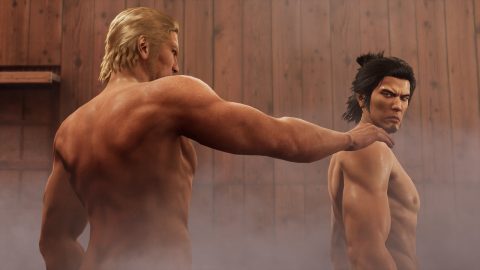
Worth noting this Kiwami version was not made in an in-house engine, but instead Unreal Engine 4. This seems to be an experiment using the tech, and time will tell if RGG will retire the Dragon Engine after Infinite Wealth for UE.
Ishin is close to being a home run entry, but the wish-washyness of the story’s handling of the inherent politics of the conflict it’s exploring, alongside that yikes adjacent ending speech, does drag it down a bit. The character drama is fine enough, but nowhere near close to being all-time great stuff due to an apprehension to actually engage with its own themes beyond the most broad and agreeable. Still, the game can be appreciated in many other ways, including how it would be the blueprint for the game that would finally turn Like A Dragon into a global powerhouse franchise.
